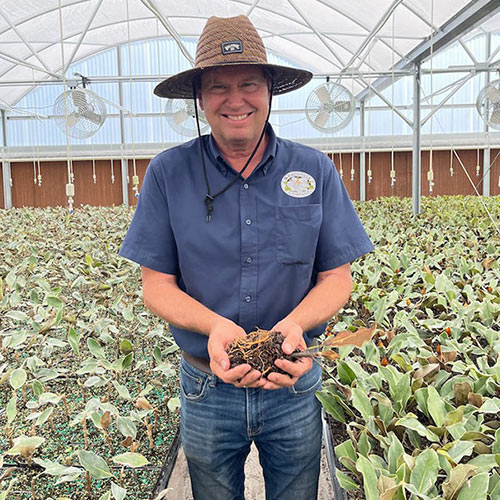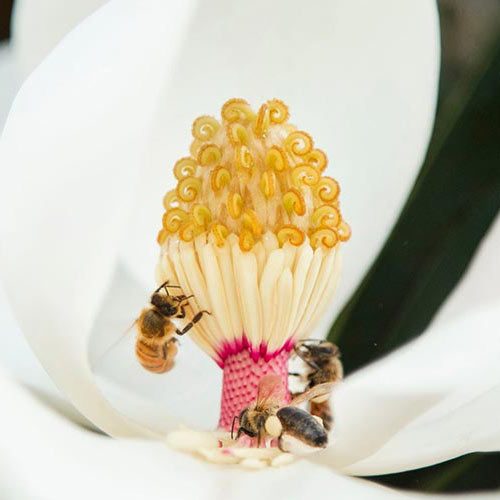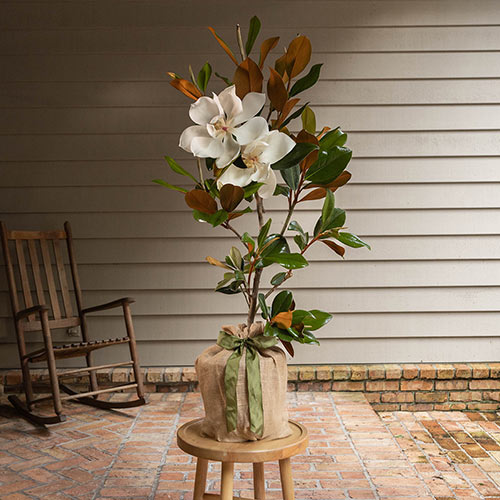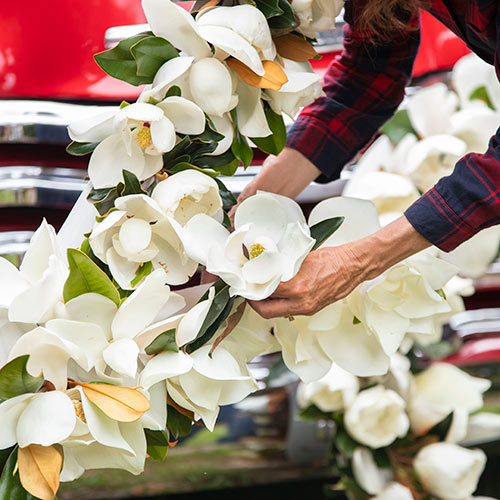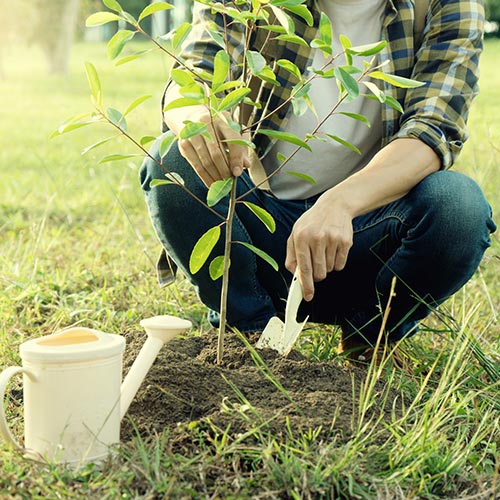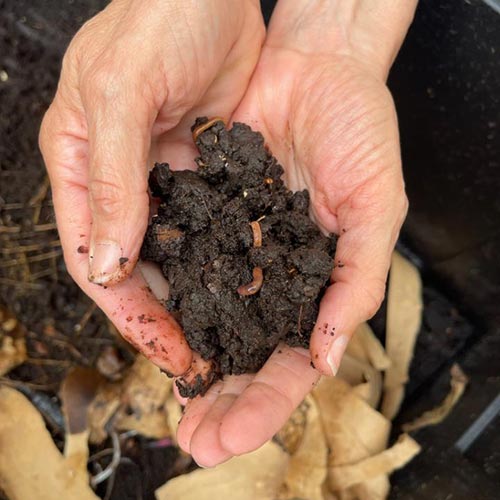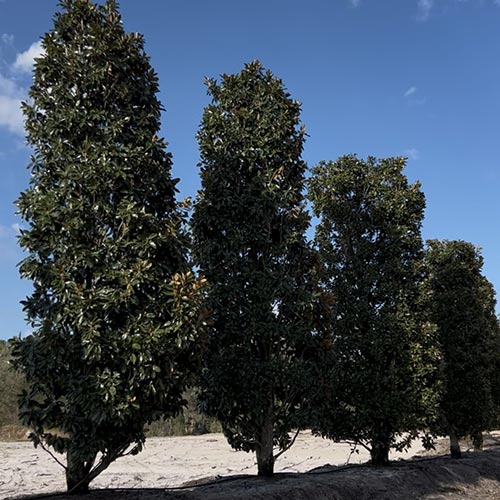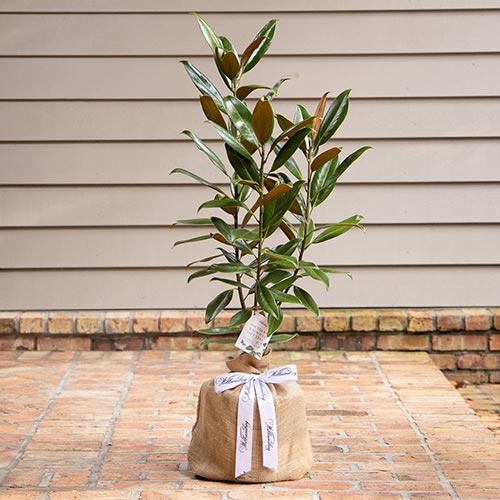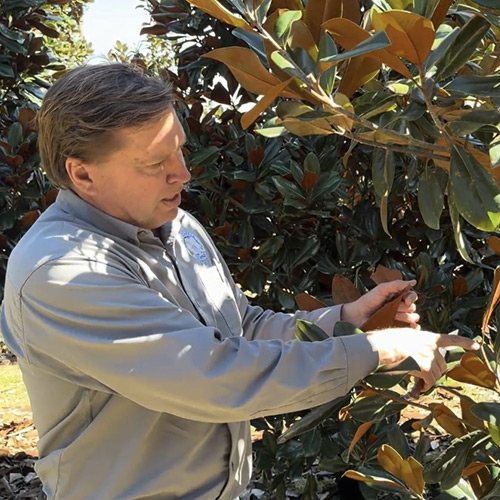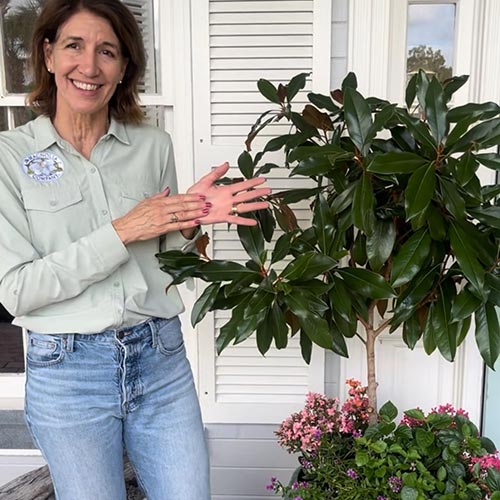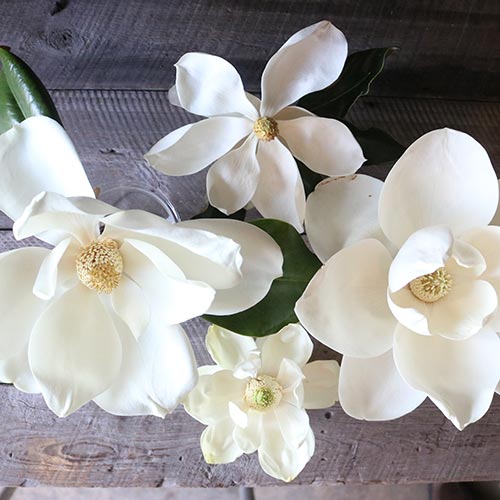A Farmer’s Best Friend: Fungi and Its Agricultural Benefits
March 22nd, 2024
Maybe you picture mushrooms as cute little Mario cartoons. Maybe they’re a tasty addition to your pizza toppings. Or, maybe you’re a bit grossed out by them. As your resident plant nerds, we’re a little obsessed.
Today, we’re diving into the fantastical world of fungi and the exciting new developments we’re cultivating and incorporating into our farming practices!
A New Horizon
Mycology, the field of study that encompasses fungi, yeast, and mushrooms, still has a lot to learn about itself. Every day, we’re learning more and more about fungi relationships and how they interact with the plant world.
This relationship we’ve uncovered stems from the premise of the underground rhizosphere (which is a pretty expansive swath). Fungi play a major role in consuming decaying material, and they store that as energy for new plants. It’s among nature’s beautifully unseen symbioses.
As it relates to farming and commercial agriculture, the ability to harness this symbiotic relationship is burgeoning and bursting at the seams with potential. It’s fairly new and totally exciting.
When a Tree Falls in the Forest, the Fungi Definitely Hear It.
It’s an old adage notorious for making heads spin, but in this case, it doesn’t matter if you heard the rhetorical tree fall, because the forest and mushrooms certainly did. Dead plants and fallen trees are absolutely inundated with spores from surrounding mushrooms. Spores are like seeds, but much, much smaller.
As the fungi spores germinate in the dead and decaying plant material, they form a fungal network that rapidly consumes the tree – specifically, the carbon molecules it’s composed of. Most of the time, we don’t see this network unless we go looking for it. Instead, we see the mushrooms it produces, which are like the fruit of the fungus. Just like the apple off the apple tree.
The fungi use the nutrients from the dead tree to expand its fungal network into the soil, which is incredibly beneficial for the environment. The network is like a nutrient highway, allowing all kinds of molecules to be redistributed across the underground forest floor.
Of course, “bad” fungi exist. Not all fungi are fun guys. But lots of fungi are critical to cultivating a healthy forest terrain. These good guy fungi are known as mycorrhizal fungi, and their underground networks can stretch for miles.
Mighty Mycorrhizal Mushies
Everything we’ve talked about so far assumes the fungi’s food source is dead and decaying matter. But, what about the mushrooms you see on living trees? If the fungi consume the carbon the tree is made from, it’s logical to assume that finding fungi on a living tree is a sign of sickness or causes distress for the tree.
That couldn’t be further from the truth.
In talking with Matt Roth, resident plant nerd at The Magnolia Company, he almost fell out of his chair in excitement at this part.
So get this: There’s a special kind of symbiotic exchange at play.
Scientists have discovered certain kinds of beneficial bacteria work in tandem with mycorrhizal fungi to transfer nutrients between the tree’s roots and the fungi. The fungi, of course, get access to the tree’s carbon stores. The tree’s roots get access to the mycorrhizal network – the underground nutrient highway.
Basically, the roots of the tree are able to access nutrients they’d otherwise have a hard time reaching. The mycorrhizal network transports all kinds of molecules, like water, phosphorus, zinc, calcium, and magnesium.
It doesn’t just stop there, either. The mycorrhizal network also behaves like a safety net, protecting the tree’s roots from “bad” fungi and bacteria.
If you needed another reason to fall out of your chair for fungi, this last one will blow your mind: the mycorrhizal network is also a communication network. Yep, just like the Avatar movies. It’s a mega ecosystem that can datashare information about environmental stressors, like droughts for example.
By tapping into the root systems of multiple plants (remember, this network can stretch for miles), these mighty little mushrooms create the world’s best neighborhood. Need a little extra phosphorus? Your tree neighbor a mile down the walking trail has a reserve you can tap into. No biggie.
Breaking Tradition
Traditional agriculture models are based on monoculture: growing just one crop on one specific plot of land at a time. Farming land in this way is easy and organized. However, it can deplete the soil of valuable nutrients that feed the plants, and as a result, we’ve had to develop work-arounds to keep being able to use the land.
Some farmers rotate the crops that go on each plot, so that the land has time to recover its different nutrient levels. Most farmers rely heavily on fertilizer to fix the ruined nutrient desert. These methods work, but they’re ultimately harmful on a big picture scale.
Natural fertilizers made from manure, mulch, and other organic materials are a step in the right direction. The biggest barriers to use with these organic and natural fertilizers are access and precision. Compared to chemical fertilizers, organic material fertilizers are bulky, expensive, and can’t be measured or controlled for exact results in the same way. Their results are often more varied than chemical fertilizers, and when you’re running a business, varied results are not something most agribusiness owners are keen on seeing.
Fungi Are Friends
By introducing fungi, farmers have an ecofriendly way of accessing nutrients without completely depleting the landscape of its nutrient repositories. It’s more consistent and saves a lot more than just fertilizer expense.
Right now, farmers who integrate fungi into their agriculture typically do so in tandem with heavily reduced amounts of chemical fertilizer or rely mainly on natural fertilizers.
Make no mistake: it’s still an expense to these farmers, in terms of both money and labor. What we’re seeing, however, is that by integrating fungi into growing practices, the benefits are beyond worth the cost. Fungi bonded plants have a huge advantage beyond fertilizer: water.
“I don’t know for sure yet – we’re just making the [early] investments in it, but I think at the end of it all, it’s going to be a savings on fertilizer and a savings on water and really just be a healthier plant. Costly up front, but worth the payoff,”
– Matt.
The glorious mycorrhizal network is a perfect ecological plumbing system. Because the fungi’s network connects directly to the roots of established plants, the plant gains access to water reserves it can’t reach on its own. Basically, growers end up with a more drought tolerant plant and ultimately need to water less.
Mushrooms & The Magnolia Company
At The Magnolia Company and generally in the horticulture and nursery trades, we’ve figured out which species of fungi are best suited to specific crops.
There’s a whole field and business to fungi consulting for this purpose, so as a company, we leave it to the pros to tell us which fungi are best suited to our needs. We stumbled across the phenomena by accident at a trade show, got curious, and decided it was worth the experiment. Much like our efforts with water conservation, this technique has the potential to have a huge environmental payoff.
In the experimentation we’ve done over the last 18 months, it’s still a pretty new phenomena to our fields. There’s a clear difference in the growth patterns of trees we’ve introduced the fungi technique to, and it’s no small thing that you need to look for under a microscope.
The root structures of the fungi assisted trees in our nurseries are substantially larger – we’re talking twice the size of unassisted plants. The best part: the results are consistent. As long as we don’t intentionally kill off the mycorrhizal network, it’ll stay with the tree throughout its life, even as the tree gets planted in different locations.
Matt’s parting remark sums things up pretty well:
“To stop what you’re doing and do something new is an investment of time, and I’m sold on it in the 18 months I’ve been working with it. I plan to integrate it in our operations as a whole, and I think it’s going to let us use less chemistry in the future to grow in a more natural, environmentally sustainable way.”
We’ll be sure to bring you along for the journey, so make sure you’ve subscribed to our mailing list for all of our awesome behind the scenes updates! We can’t wait to see where this new science takes us.
Recent Articles

